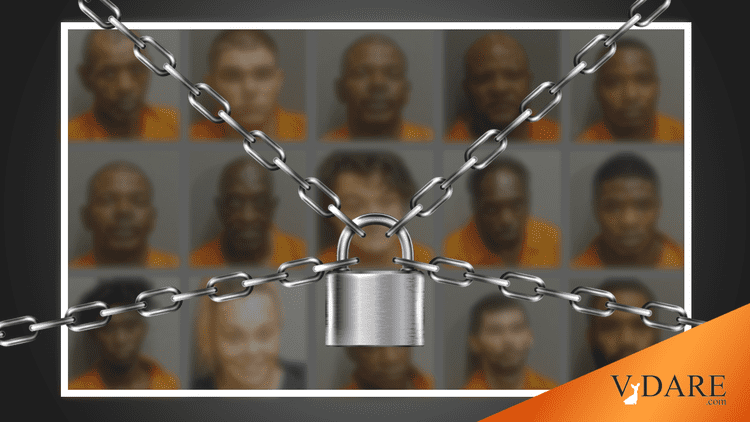


By Paul Kersey
06/19/2020
Earlier: ORLANDO SENTINEL Stops Publishing Mugshots Because Too Many Of Them Are Black and TAMPA BAY TIMES Stops Publishing Mugshots Because They "Disproportionately Show Black and Brown Faces" Which "Further Negative Stereotypes"
It’s happening across the nation. Newspapers have decided concealing the faces/images of those who break the law and commit crime in the communities they purportedly serve is a greater public good than publishing those images.
Why? Because too many non-whites are committing crime, and this serves “little journalistic value” and continues to “reinforced negative stereotypes” white people have established regarding People of Color and criminality.
Interestingly, this is all being done in states once comprising the Confederacy.
Even sweet home Alabama.
AL.com to end publishing most mugshots in stories: Here’s why, AL.com, June 18, 2020
Beginning today, AL.com will no longer publish mugshots as part of its crime and justice coverage, with a few exceptions.
Exceptions can include when a suspect is arrested and accused of committing capital murder, corruption by public officials or crimes involving a breach of public trust. And, we’ll use them when a search is ongoing after a violent crime or in unusual instances when the mugshot is of compelling public interest.
I’m certain there are occasions we haven’t yet imagined where we might deem a mugshot necessary to our reporting, and when those instances arise, we’ll explain why we chose to publish the image .
This is a first step in reimagining our coverage of crime and justice. In November, a group of Alabama Media Group reporters and editors began discussing how to make our crime and justice coverage more meaningful for our digital readers.
Here are some of the problems we see with publishing mugshots with crime stories:
- Access to mugshots varies throughout the state. The photograph of someone accused of the same crime may be readily available in one city or county, but not in a nearby jurisdiction. City, state and federal agencies differ on whether the pictures are made available at all.
- Although we previously used almost all mugshots that were made available to us by law enforcement agencies, many readers viewed our use of them as symbolic of our company’s view of their community; our hope is to eradicate that perception.
- Mugshots are typically provided in relation to arrests. Yet criminal proceedings typically reach conclusion months and years later, so the suspect’s guilt or innocence — the rest of the story — is not part of the initial report. Meanwhile, the mugshot will often still be viewed when an individual’s name or case is searched.
- Social media sites and digital templates display images in a way that often lends more significance to the image and story than intended. And, mugshots are often perceived as analogous to guilt, which is unfair given that our judicial system is based on the premise of “innocent until proven guilty.”
The only way the public can evaluate the functioning of its legal system is to observe its activities, to study how police and prosecutors and elected judges go about their jobs. To that end, we will continue to review mugshots regularly and believe they should remain a matter of public record.
Some of you might have questions about mugshots used in past coverage. We have yet to make a decision about how to handle archived material.
We have much work to do in developing an approach that helps Alabamians understand how our state’s criminal justice system works, how it impacts us and how we can all work toward improving it.
The decision to limit use of mugshots is a first step in what will be a transparent process to help us reshape coverage of the criminal justice system in our state. In the coming weeks, I hope to share more details about how you can join our conversation, ask the questions you have about the criminal justice system and help us understand your expectations.
Truth, it seems, has a well-known racial bias.
To quote one of the prophets of the 21st century, “punishment must be unusual or it serves no purpose.”
Those who break the law should have their photos published in local papers, for shame serves as a great deterrent to repeat offending. The community should be made aware of those who break the law, and if racial patterns emerge, then society can pass laws based on this information to protect the law-abiding.
For remember: in a multiracial society, social policy shouldn’t be based on individuals.
And once stereotypes are confirmed to have firm basis in racial truth, social policy will immediately be crafted from these observations.
Interesting to think our ancestors long ago operated under this same protocol…